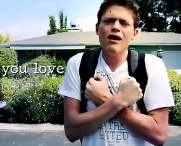Site Map: The Tempo of this Webtext
Each section of this webtext contributes an element to the theme of incorporating ASL music videos in accessible multimodal pedagogies.
Embodiment: Sensing Music through the Body and Embodiment 2: The Multisensory Experience of Music serve as an introduction to ASL music videos. I distinguish the rhetorical features of ASL music videos from those of conventional music videos and discuss how Deaf composers embody the multisensory experience of music in the body through the movement of dynamic visual text.
Throughout this webtext, I rhetorically analyze the design of four ASL music videos that demonstrate accessible multimodal practices. The first of these is Example #1: "Fireflies".
Multimodality: Multimodal, Multisensory Communication and Multimodality 2: The Multisensory Classroom Space discuss the pedagogical value and necessity of communicating in different and multiple ways to reach different bodies and multiple senses. I advocate for my values as a Deaf composition teacher–scholar and endorse scholarship on accessibility and universal design for learning. The pedagogical principles in this section reinforce how we can learn from ASL music videos to design for differences.
Accessibility: Potentials and Limitations and Accessibility 2: Engaging Multiple Senses directly address the limitations of ASL music videos, which are not accessible for those who cannot see the visual mode, to show that we should critique any multimodal composition. This section asserts that when we recognize the inaccessibility and potentials of compositions such as ASL music videos, we can develop and design more accessible compositions that engage multiple senses.
Pedagogy: Incorporating ASL Music Videos in an Accessible Multimodal Pedagogy illustrates my experiences incorporating these ASL music videos in the classroom. I provide pedagogical strategies for introducing, analyzing, designing, reflecting on, and redesigning ASL music videos and other accessible multimodal compositions. I call on composition instructors to redesign these strategies as we all, students and instructors alike, communicate across multiple modes and reach various senses.
Example #4: "Beautiful" is the final example. Together, the analyses of these examples can serve as guiding points for scholars and students to assess the synchronization of multiple modes in multimodal compositions.
Note: I use the lowercase “deaf” when discussing the physical state of being deaf. I use the capitalized “Deaf” to refer to those who identify with Deaf culture (a cultural and linguistic minority), including Deaf designers and performers of ASL music videos and myself.
